Mary Anne Yarde's Blog: The Coffee Pot Book Club , page 128
July 29, 2019
July 28, 2019
Join #HistoricalFiction author, Eric Schumacher, as he takes a look at Climate Change and the Early Vikings #History #Vikings @DarkAgeScribe
A.D. 536, Climate Change and the Early VikingsBy Eric Schumacher
There has been plenty of research and writing about the Viking Age, when it began and why it began. In this post, I wanted to take a step farther back, to what may have led to the Viking Age, and just pose some questions to think about.
The story begins in the summer of A.D. 536. In that year, a volcano erupted, leading Byzantine historian Procopius to write: “The sun gave forth its light without brightness, and it seemed exceedingly like the sun in eclipse, for the beams it shed were not clear. And from the time when this thing happened men were free neither from war nor pestilence nor any other thing leading to death.”
Then, in 539 or 540, another volcano erupted. It spewed 10 percent more aerosols into the atmosphere than the eruption in Tambora in 1815, which caused the infamous “year without a summer”. You can read more about these events here and here. It is believed that there may have been a third eruption. Regardless of the number, those eruptions led to a long cold spell that coincided with a period of widespread social turmoil across Eurasia that included the plague sweeping across Eastern Europe, Chinese dynasties changing, the Slavs expanding across Europe, and the transformation of the eastern Roman empire into the Byzantine empire. The cold period, which saw temperatures drop in some cases 4 °C, lasted until around A.D. 660.
So my main questions are: what effects might these events have had on the peoples living in the far north, where populations were scraping a living in the cold, and now colder, climate? Could these events have marked the dawn of the Viking Age?
Research shows that during this period in Scandinavia, there were considerable changes in settlement patterns, most likely due to poor weather and crop failure, but quite possibly also related to warring over diminished resources. Archaeologist Neil Price stated in a story written for National Geographic that, “In the nearly three centuries before the raids on foreign shores began around A.D. 750, Scandinavia was wracked by turmoil. More than three dozen petty kingdoms arose during this period, throwing up chains of hill forts and vying for power and territory. In the midst of these troubled times, catastrophe struck. A vast cloud of dust…darkened the sun…In Sweden’s Uppland region,…, nearly 75 percent of villages were abandoned, as residents succumbed to starvation and fighting. When summer, at last, returned to the north…, Scandinavian society assumed a new, more truculent form. Leaders surrounded themselves with heavily armed warbands and began seizing and defending abandoned territory.” In short, the long cold period could have led to a more warlike people and a more warlike society.
 Simulated summertime (June-August) average temperature changes in 536 CE due to the stratospheric aerosol cloud resulting from an unknown volcanic eruption reconstructed here based on contemporary written records and ice core sulfate measurements. The simulated temperature changes, ranging from 1-3 ° C over Europe, show good agreement with estimates from two tree-ring temperature reconstructions based on trees in Northern Scandinavia.
Simulated summertime (June-August) average temperature changes in 536 CE due to the stratospheric aerosol cloud resulting from an unknown volcanic eruption reconstructed here based on contemporary written records and ice core sulfate measurements. The simulated temperature changes, ranging from 1-3 ° C over Europe, show good agreement with estimates from two tree-ring temperature reconstructions based on trees in Northern Scandinavia. Credit: Matt Toohey, GEOMAR
The cold period may have also formed some of Viking mythology, such as the story of Ragnarok. Ragnarok begins with Fimbulwinter, or three successive winters and no summers. There is then a giant war that leads to the death of the gods. And when they die, the sun turns black, steam rises, flames touch the heavens, etc. Sounds a lot like A.D. 536.
The sun turns black, earth sinks in the sea,The hot stars down from heaven are whirled;Fierce grows the steam and the life-feeding flame,Till fire leaps high about heaven itself.- Völuspá
During this cold, warlike period, new technologies begin to emerge. Ships were being perfected, and tar began being produced on an industrial scale. Add to that the sail, which began to appear around the end of the 7th century (curiously, at almost the same time as the first large tar pits that have been discovered), and you have the means to travel, trade and raid. With their shipbuilding skills, Scandinavians could now travel to far-flung places such as Ribe in Denmark, where researchers have discovered the remnants of long-distance trade from as early as A.D. 725. Around A.D. 750, Scandinavians established a trading center in Staraja Ladoga in the lands of the Baltic Finns.
An increase in trade would have also led to a newfound profession: piracy. The sagas tell us of sea kings fighting each other and harrying in other lands before the official Viking Age began. Evidence of this was found in 2008 at a construction site on the Estonian island of Saaremaa. There, workers uncovered the remains of two Viking ships near Salme, and multiple warriors who apparently died in battle sometime around A.D. 750.
Much of these connections point to a Viking Age that began long before Vikings appeared at Lindisfarne. Though many questions still remain, these clues suggest that the dawn of the Vikings can be found in the cold, dark days of the 6th century, when the volcanoes erupted and the sun turned black.
I am curious to hear what you think. Please leave any thoughts you have below.
Thanks for reading!
Eric Schumacher
 Eric Schumacher was born in Los Angeles in 1968 and currently resides in Santa Barbara, CA with his wife, two children, and dog. He is the author of three historical fiction novels set in the Viking Age: God’s Hammer, Raven’s Feast, and War King. All tell the story of the first Christian king of Viking Norway, Hakon Haraldsson, and his struggles to gain and hold the High Seat of his realm. For more information on Mr. Schumacher or to read more of his blog posts about the Viking Age, please visit is website.
Eric Schumacher was born in Los Angeles in 1968 and currently resides in Santa Barbara, CA with his wife, two children, and dog. He is the author of three historical fiction novels set in the Viking Age: God’s Hammer, Raven’s Feast, and War King. All tell the story of the first Christian king of Viking Norway, Hakon Haraldsson, and his struggles to gain and hold the High Seat of his realm. For more information on Mr. Schumacher or to read more of his blog posts about the Viking Age, please visit is website. Connect with Eric: Website • Twitter • Facebook • Goodreads.
Hakon's Saga Book SeriesBy Eric Schumacher

Amazon UK • Amazon US
Sources:1) https://www.smithsonianmag.com/scienc...) https://www.newscientist.com/article/...) https://www.newscientist.com/article/dn24948-black-death-may-have-scuppered-roman-empire/4) https://gizmodo.com/how-industrial-scale-tar-production-powered-the-viking-1830022085) https://www.york.ac.uk/news-and-event...
Published on July 28, 2019 20:00
July 26, 2019
#BookReview — The Adventures of Mountain Ma'am by Juliana Rew #HistoricalFantasy @julirew
 The Adventures of Mountain Ma'amBy Juliana Rew
The Adventures of Mountain Ma'amBy Juliana Rew
Struggling to survive in the treacherous Colorado Rockies, Callie Dawson never expected to find a friend - let alone a partner. But when she befriends the wild wolf Sina, Callie learns she has a destiny intertwined with the future of the American West. She is the Mountain Ma'am!
Together with Sina and her soulmate Johnny, Callie leads the Laramide Nation, a loose coalition of humans and animals dedicated to protecting the land and all who live there. Battling crooked interests, feuding animals, and evil magical forces, Callie and the Laramide Nation protect Leadville and work to ensure that Sina's endangered descendants will always have a home in their native habitat.

"You are of the mountains. You are the Mountain Ma'am..."
Callie Dawson had always been a free spirit, which was perhaps why she had rushed into marriage with the handsome and charismatic Harry. However, there was another side to Harry. He was controlling, cruel and violent. Callie had no choice but to flee into the mountains.
Alone in the Colorado Rockies, Callie has plenty of time to reflect upon her life and her choices. Her first mistake was marrying Harry. Her second one was running away to such a harsh and unforgiving place. How was she going to survive in a land that is as savage as it is beautiful?
Help comes at the least likely of moments and in the form of a wolf. Callie thought she must be losing her mind when she heard the wolf speak. Things like that didn't happen. Animals do not talk. But this one did.
Callie's eyes are opened to a world that she never knew existed. Now she must decide if she is to fulfil her destiny and become The Mountain Ma'am — the protector of the Laramide Nation.
What a charming and delightful book. Split into eight short stories The Adventures of Mountain Ma'am by Juliana Rew is the perfect escapism for a quick coffee break.
I was intrigued as to why Rew decided to write this book not as a complete full-length novel but as a short story cycle. Initially, I did have some concerns that Rew would not be able to pull this off as at times the language she used was rather simplistic. However, with each tale, I learnt more about the heroine and the world that the story is set in. This careful use of word-building made this book refreshingly charming.
The heroine of this tale is Callie. Callie is a strong-willed heroine, who is incredibly pragmatic and accepting of the strange paranormal world that she finds herself in. In each short tale, we learn a little more about her, which makes this collection into something resembling a journey of discovery. There is a cast of supporting characters, my favourite being Johnny, that helps to drive the narrative forward.
There is a heavy dose of the paranormal in this little book, from talking wolves, arguing woodpeckers, and a fairy King, which kept me turning those pages.
If you are looking for a quick yet charming read, then look no further than The Adventures of Mountain Ma'am.
I Recommend.
Review by Mary Anne Yarde.The Coffee Pot Book Club.
Pick up your copy ofThe Adventures of Mountain Ma'amAmazon UK • Amazon US
Juliana Rew
 Juliana Rew is a former science and technical writer for the National Center for Atmospheric Research in Boulder, Colorado, and has won over a dozen technical writing competitions. She also writes science fiction and is chief editor and publisher of Third Flatiron Anthologies, a quarterly science fiction and fantasy publication available via Amazon.com. Third Flatiron is an Affiliate Member of SFWA.
Juliana Rew is a former science and technical writer for the National Center for Atmospheric Research in Boulder, Colorado, and has won over a dozen technical writing competitions. She also writes science fiction and is chief editor and publisher of Third Flatiron Anthologies, a quarterly science fiction and fantasy publication available via Amazon.com. Third Flatiron is an Affiliate Member of SFWA.Connect with Juliana: Website • Blog • Twitter.
Published on July 26, 2019 20:00
#BookReview — Bright Axe: The Byrhtnoth Chronicles Book 2 by Christine Hancock #HistoricalFiction @YoungByrhtnoth

Bright AxeThe Byrhtnoth Chronicles Book 2By Christine Hancock
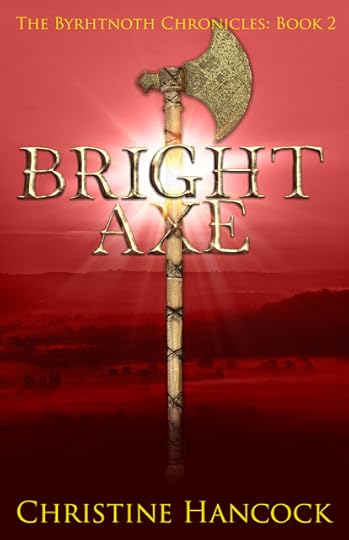
AD 947: Byrhtnoth has received his father’s sword. But his hall is burnt and the sword stolen. Learning that his father still lives, he swears a solemn vow to find him.
Torn between his quest and duty to Lord Athelstan of East Anglia, friends are hurt when an old enemy unexpectedly reappears. Despised by his best friend for his failure, he is sent deep into Northumbria, to Bebbanburg.
Winter closes in and wolves prowl the hills. Who is the mysterious woman he encounters there? She offers him news of his father – and more.
Will Byrhtnoth remain with her, or return home to discover the fate of the friends he abandoned?
Or should he continue the quest for his father?

“Yesterday I lost a sword and was given another, the one I had longed for. It was my father’s sword, kept from me until I became a man…”
But, now the sword is lost and finding his father feels like an unattainable dream. Thegn Byrhtnoth has responsibilities. His people need him, more now than ever and Ealdorman Athelstan demands his loyalty. However, the vow he made to a dying man lies heavy within his soul. He must find his father. He must discover the truth.
It is hard being a slave, even more so when you are in love with someone who can never be yours. Saewynn longs for the freedom not only to love but to control her destiny. She is no good at cooking, nor does she enjoy other womanly pursuits. She wants to become a warrior — a Shield Maiden. All Saewynn has to do is convince the object of her adoration that it would be a good idea to train her in the art of warfare. If Byrhtnoth says no, then Saewynn does not know what she will do.
With war upon the horizon and his enemy closing ranks, Byrhtnoth must prepare for battle. Thoughts of his father will have to wait. However, during his time away, Byrhtnoth encounters a beautiful yet mysterious lady who claims to have news of his father. However, he must be cautious, for although the lady is a slave, men fear her.
From a terrible fire in Essex to the cold and unforgiving terrain of Bebbanburg in Northumbria, Bright Axe: The Byrhtnoth Chronicles Book 2 by Christine Hancock is a gripping account of war, betrayal, loss and love.
Hancock has plucked her hero, Byrhtnoth, out of obscurity and breathed new life into a man in which very little is known about, other than the fact that he was a 10th-century Saxon Ealdorman of Essex and he died at The Battle of Maldon. I thought her depiction of this seemingly forgotten 10th Century hero was fabulous. He is a protagonist that a reader can really get behind. Byrhtnoth is kind and generous, and seemingly blind to what is staring him in the face! Byrhtnoth is a flawed character, and he makes mistakes which I think made him all the more human in the telling.
The other protagonist in this beautiful tale is Saewynn. I adored her. She is such a brave young woman who finds herself in a very precarious situation. It is pride that tears Saewynn and Byrhtnoth apart, which leads to some very dire consequences for Saewynn. At times Saewynn’s plight made for very difficult reading, but it was Saewynn’s emotional reaction to the events after they had happened where Hancock really showed what an excellent storyteller she is. Brilliantly written and totally absorbing. Kudos, Ms Hancock.
There are several antagonists in this story, and they are, as expected, vile and cruel. However, the most despicable of them has to be Egbert. His actions are as deplorable as they are vicious. Egbert’s portrayal was very chilling indeed, and yet it drove this story forward. There were times when I did not want to read on for fear of what he was going to do next, but at the same time, I needed to know. Talk about compulsive reading!
There is one other character I would like to mention, and that is Wulfstan. I found myself torn between Byrhtnoth and Wulfstan. I wanted both of these wonderful characters to get what they deserved. Wulfstan is the constant in Byrhtnoth’s life. He is also unwittingly Byrhtnoth’s conscience. When Wulfstan rebukes him, Byrhtnoth listens and takes stock of what Wulfstan says. I loved Wulfstan. He really helped to give this book depth. Superbly written and masterfully portrayed.
Although the narrative sometimes came across as very modern, this did not take anything away from the story itself. Hancock has presented her readers with an authentic historical backdrop, and the hours of research that Hancock has dedicated to this book certainly shines through. I have not read book 1 in The Byrhtnoth Chronicles, but this did not hamper my enjoyment of Bright Axe at all. This book works very well as a stand-alone. However, I now want to go back and read Book 1!
If you fancy dipping your toes into the Dark Ages, then Bright Axe: The Byrhtnoth Chronicles: Book 2 may just be the book for you.
I Highly Recommend.
Review by Mary Ann Yarde.The Coffee Pot Book Club.
Pick up your copy ofBright AxeAmazon UK • Amazon US
Christine Hancock
 I was born in Essex and moved to Rugby, Warwickshire when I married. I have a husband, two sons and two lovely grandchildren.
I was born in Essex and moved to Rugby, Warwickshire when I married. I have a husband, two sons and two lovely grandchildren.I am a long-term family historian, leader of the local history group and town guide.
I had never thought of becoming an author – I just wanted to write about some of my ancestors. In 2013 I joined a writing class. The class turned out to be about writing fiction. Before I knew it, I was writing a novel.
Byrhtnoth was a real warrior who died in the 991 Battle of Maldon, made famous by the Anglo-Saxon poem of that name. Growing up in Essex, I visited Maldon often, and attended the 1000 year anniversary of the battle in 1991.I wanted to find out what made Byrhtnoth such a famous warrior.
I finished the book but found it had become a series – how long, I have yet to find out.
Connect with Christine: Blog • Facebook • Twitter
Published on July 26, 2019 19:00
July 25, 2019
Join historian and author, Sharon Bennett Connolly, as she takes a look at the life of Judith of Flanders, Countess of Northumberland #History #1066
Judith of Flanders, Countess of NorthumberlandBy Sharon Bennett Connolly
Judith of Flanders was born sometime in the early 1030s. Her father was Baldwin IV, Count of Flanders; he died in 1035, when Judith was, at most, five years old and possibly still only a baby.
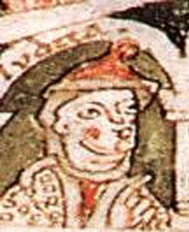 Judith of Flanders
Judith of FlandersBaldwin had been count since the age of seven, from 987, his first wife was Orgive of Luxembourg, the mother of Baldwin’s son and heir, Baldwin V, who was born in 1012. She died in 1030; her son, Baldwin V, married Adele of France, the second daughter of Robert II (the Pious), King of France, and they had at least three children together, including Baldwin VI, Count of Flanders, and Matilda of Flanders, Duchess of Normandy and Queen of England as the wife of William the Conqueror. After Orgive’s death, Baldwin IV married again. In about 1031 he wed Eleanor of Normandy, the daughter of Baldwin’s neighbour, Richard II, Duke of Normandy, and his wife, Judith of Brittany. Eleanor’s brother was Robert I, Duke of Normandy, the father of William the Conqueror, who became Duke of Normandy and King of England. Eleanor’s daughter and only child Judith, therefore, was a first cousin of the future King of England.
When her father died in 1035, Judith’s older brother, who was about twenty years her senior, succeeded as Count Baldwin V; it would be he who decided on Judith’s future when the time came for her to marry. We know nothing of Judith’s childhood or level of education. As the daughter of a count, expected to make a good marriage into another ruling or noble family, she would have been taught how to run a large household, dancing, embroidery and possibly some languages, such as Latin. It is unlikely, however, that she was taught to read and write, skills usually reserved for members of the Church. It is possible she was raised alongside her niece, Matilda, who was of a similar age to Judith and would later marry William of Normandy.
In the late summer or autumn of 1051, Judith was married to Tostig, a son of the powerful Earl Godwin of Wessex and his wife, Gytha. And when the family fell foul of King Edward the Confessor, Judith accompanied them into exile; back to her homeland of Flanders. Tostig was probably the third eldest son of Godwin and Gytha of Wessex, one of his older brothers being the future King Harold II of England. He would have been in his early twenties at the time of his marriage and the family’s subsequent exile; Judith was no more than six years younger than him, which would suggest she was at least fifteen years old at the time of her marriage.
Judith would have returned to her new homeland of England when Tostig and his family forced their return from exile in 1052. After some vigorous negotiations in London, an uneasy peace was restored between Earl Godwin and the king. Judith and Tostig would have finally been able to settle down to married life, following months of uncertainty and upheaval. Although it is impossible to say for certain, they were probably given one of Godwin’s many comital estates, somewhere in Wessex, in which to set up their household. Their marriage appears to have been a successful one, with no rumours of infidelity recorded by the various chroniclers of the time. They are thought to have had two sons together, Skuli Tostisson Kongsfostre and Ketil Tostisson, born in 1052 and 1054, respectively.
Tostig was created earl of Northumbria in 1055 and spent the next few years sparring with sparring with Malcolm III, King of Scots. However, with peace restored Tostig left on pilgrimage to Rome in 1061, taking Judith with him. They were accompanied by several English bishops, including several English bishops Ealdred, bishop of Worcester, who had just then been made archbishop of York by King Edward, and was travelling to Rome to receive his pallium.
Their party reached Rome in the spring of 1061, where they were received honourably by Pope Nicholas; Tostig given the honour of attending a synod, possibly that held on 15 April at Easter 1061, at which Tostig is said to have sat next to the pope. Shortly after departing Rome for their homeward journey, Tostig’s party were caught up in a local dispute between the papacy and the Tuscan nobility; they were ambushed while travelling along the Via Cassia, by the Count of Galeria. Tostig was able to escape by the ruse of one of his own thegns pretended to be the earl. Judith and a large portion of the party had gone on ahead and were unaware for some time of what had befallen Tostig. She must have been relieved to hear of the failure of the attack when Tostig eventually caught up with her.
Judith appears to have been a very pious individual, although some stories have come down to us of disagreements between the Earl and his countess, and the Church. One story from Symeon of Durham tells of Judith’s attempts to circumvent the rules of the community of St Cuthbert. Despite there being a specific injunction forbidding women to enter the precincts of the church in which lay the shrine of St Cuthbert, Judith was determined to get around this. She sent one of her own maidservants to attempt entry, but the poor girl fell ill as soon as she crossed the boundary and died shortly afterwards, clearly demonstrating the power of St Cuthbert’s will. We can assume that Judith gave up trying to enter the shrine after that! Judith sent gifts to the cathedral - including a crucifix, church ornaments and images of the Virgin Mary and St John the Evangelist, decorated in gold and silver – to make amends for her disastrous attempt to break the rules.
Despite this, the relationship between them and the Church at Durham was generally cordial and mutually appreciated. The earl and countess were notable for almsgiving in Northumbria, and for having close links to the community of St Cuthbert in Durham, to which they gave several relics. And Æthelwine, Bishop of Durham, was generous enough to give Judith a relic containing some of St Oswine’s hair. Tostig and Judith are both commemorated in the Durham Liber Vitae.
In 1065, rebellion in Northumbria saw Tostig and his family banished from England; he and Judith, their children and their entire household, crossed the English Channel on 1 November 1065. They made their way to Flanders, to seek refuge with Judith’s brother, Count Baldwin, where they were warmly welcomed just a few days before Christmas. However, everything changed in January 1066, with the death of Edward the Confessor and the accession of Tostig’s brother, Harold, to the English throne. Not one to miss an opportunity, Tostig started raiding English shores, before invading from Scotland with his ally Harald Hardrada, King of Norway. They defeated the Northumbrians at the Battle of Fulford, near York, before facing Tostig’s brother, Harold II, across the battlefield of Stamford Bridge a few days later. King Harold proved victorious and Tostig and his ally, Harald Hardrada, were both killed in the fighting.
Judith’s whereabouts during Tostig’s invasion are not mentioned. It is possible that she stayed safe in Flanders with her family and two young sons, the oldest of whom was about fourteen by 1066, but she may have travelled with her husband; there is a suggestion that at least one of her sons fought at Stamford Bridge and travelled to Norway with the survivors. Following Tostig’s defeat at Stamford Bridge, and Harold’s subsequent death at the Battle of Hastings, Judith’s two sons by Tostig eventually sought refuge with King Olaf ‘the Peaceable’ of Norway, Harald Hardrada’s son who had been allowed to return home following his father’s defeat and death at Stamford Bridge. Little is known of their movements after that, other than that the oldest, Skuli Tostisson Kongsfostre, must have married and had children as he was the ancestor of King Inge II of Norway.
For a time, Judith remained in Flanders from where her older, half-brother, Count Baldwin V, arranged a second marriage for her in about 1070, to Welf IV, the newly created Duke of Bavaria. The couple were to have two sons and a daughter; Welf, who succeeded his father as Duke of Bavaria and died in 1119, Henry and Kunizza, who married Count Frederick of Diessen and died in 1120. Henry succeeded his brother as Duke of Bavaria and died in 1126; he had at least seven children by his wife, Wulfhilde of Saxony.
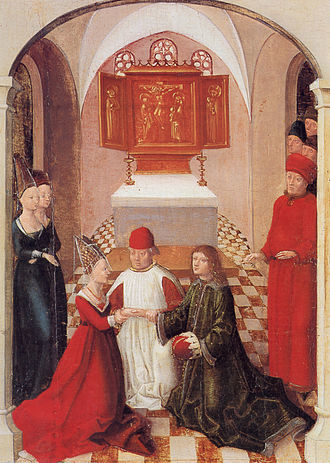 Judith marrying Welf of Bavaria.
Judith marrying Welf of Bavaria.A patron of the arts, Judith is renowned for the commissioning of four gospel books, luxurious creations produced in England, probably at Winchester. When Judith left England, she took these gospels, with other manuscripts and relics in her private collection, with her to Flanders. After she remarried, they accompanied her to southern Germany. On 12 March 1094, with the approval of her husband and sons, Judith drew up a list of bequests. She bequeathed the four gospels and other treasures, to the monastery at Weingarten, a foundation of her husband’s family, thus helping to disseminate Anglo-Saxon art throughout southern Europe. Among the bequests was also a relic of Christ’s blood, given to her by her father. She died a year later, on 5 March 1095, and was buried at the Abbey of Weingarten. Judith is remembered at Weingarten as a widowed queen of England, perhaps a testimony to how close her first husband got to the English throne.
 One of the 4 gospel books of Judith of Flanders (courtesy British Library).
One of the 4 gospel books of Judith of Flanders (courtesy British Library).Silk and the Sword:The Women of the Norman ConquestBy Sharon Bennett Connolly
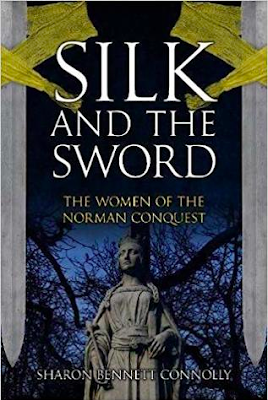
Everyone knows about the events of 1066; the story of invasion and conquest. But what of the women? Harold II of England had been with Edith Swan-neck for twenty years but in 1066, in order to strengthen his hold on the throne, he married Ealdgyth, sister of two earls. William of Normandy's duchess, Matilda of Flanders had, supposedly, only agreed to marry the Duke after he'd pulled her pigtails and thrown her in the mud. Harald Hardrada had two wives - apparently at the same time. So, who were these women? What was their real story? And what happened to them after 1066? From Emma of Normandy, wife of both King Cnut and Aethelred II to Saint Margaret, a descendant of Alfred the Great himself, 'Silk and the Sword' traces the fortunes of the women who had a significant role to play in the momentous events of 1066.
Pick up your copy ofSilk and the Sword:The Women of the Norman ConquestAmazon UK • Amazon US
Heroines of the Medieval World By Sharon Bennett Connolly
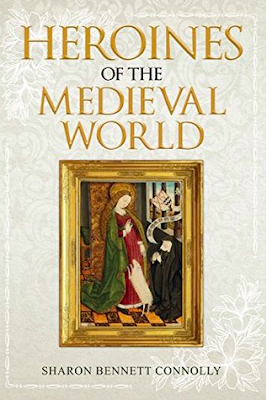
These are the stories of women, famous, infamous and unknown, who shaped the course of medieval history. The lives and actions of medieval women were restricted by the men who ruled the homes, countries and world they lived in. It was men who fought wars, made laws and dictated religious doctrine. It was men who were taught to read, trained to rule and expected to fight. Today, it is easy to think that all women from this era were downtrodden, retiring and obedient housewives, whose sole purpose was to give birth to children (preferably boys) and serve their husbands. Heroines of the Medieval World looks at the lives of the women who broke the mould: those who defied social norms and made their own future, consequently changing lives, society and even the course of history.
Some of the women are famous, such as Eleanor of Aquitaine, who was not only a duchess in her own right but also Queen Consort of France through her first marriage and Queen Consort of England through her second, in addition to being a crusader and a rebel. Then there are the more obscure but no less remarkable figures such as Nicholaa de la Haye, who defended Lincoln Castle in the name of King John, and Maud de Braose, who spoke out against the same king’s excesses and whose death (or murder) was the inspiration for a clause in Magna Carta.
Women had to walk a fine line in the Middle Ages, but many learned to survive – even flourish – in this male-dominated world. Some led armies, while others made their influence felt in more subtle ways, but all made a contribution to their era and should be remembered for daring to defy and lead in a world that demanded they obey and follow.
Pick up your copy ofHeroines of the Medieval World Amazon UK • Amazon US
Sharon Bennett Connolly
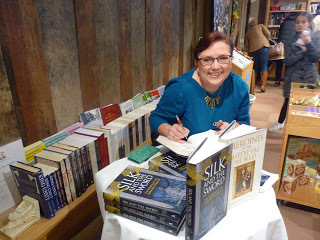 Sharon Bennett Connolly has been fascinated by history for over 30 years now. She has studied history academically and just for fun – and even worked as a tour guide at historical sites, including Conisbrough Castle. Born in Yorkshire, she studied at University in Northampton before working in Customer Service roles at Disneyland in Paris and Eurostar in London. For Christmas 2014, her husband gave her a blog as a gift – History ... the Interesting Bits (www.historytheinterestingbits.com), allowing her to indulge in that love of history. In 2016 she was given the opportunity to write her first non-fiction book, Heroines of the Medieval World, which will be published by Amberley in September 2017. She has just published her second non-fiction book, Silk and the Sword: The Women of the Norman Conquest, and is now working on Ladies of Magna Carta, which will be published by Pen & Sword in May 2020.
Sharon Bennett Connolly has been fascinated by history for over 30 years now. She has studied history academically and just for fun – and even worked as a tour guide at historical sites, including Conisbrough Castle. Born in Yorkshire, she studied at University in Northampton before working in Customer Service roles at Disneyland in Paris and Eurostar in London. For Christmas 2014, her husband gave her a blog as a gift – History ... the Interesting Bits (www.historytheinterestingbits.com), allowing her to indulge in that love of history. In 2016 she was given the opportunity to write her first non-fiction book, Heroines of the Medieval World, which will be published by Amberley in September 2017. She has just published her second non-fiction book, Silk and the Sword: The Women of the Norman Conquest, and is now working on Ladies of Magna Carta, which will be published by Pen & Sword in May 2020.Connect with Sharon: Website • Twitter • Facebook.

Published on July 25, 2019 21:00
July 24, 2019
Check out #HistoricalFiction author, David Pilling's fabulous book — Longsword (IV):The Hooded Men @RobeH2
Longsword (IV):
The Hooded Men
By David Pilling
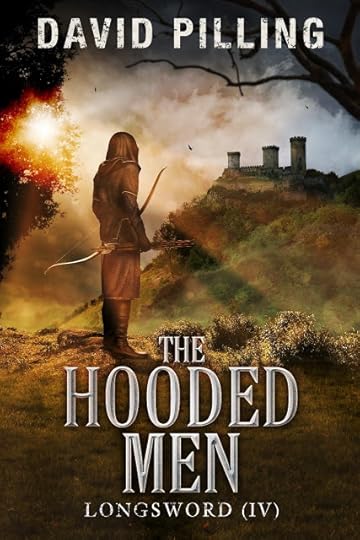
This novella is the fourth in the chronicles of Hugh Longsword, a soldier and secret agent for the English crown in the late thirteenth century.
England, 1273 AD.
Henry III is dead. The new king, Edward I, is thousands of miles away in the Holy Land. In his absence, old enemies plan to shatter the fragile peace and plunge England into another civil war. Robert Ferrers, the outlawed Earl of Derby and Edward’s bitter enemy, raises the standard of revolt. He gathers an army of outlaws and secretly dreams of seizing the crown itself.
Hugh Longsword arrives home in disgrace after his failure to protect Edward from an assassin’s blade. He is given one chance to redeem himself and sent to investigate disturbances in northern England. The scale of the conspiracy soon becomes apparent as Hugh encounters enemies old and new: Sir John d’Eyvill, the outlaws of Sherwood, and a mysterious knight who calls himself the King of the North Wind.
Longsword IV: The Hooded Men is the latest historical adventure novel by David Pilling, author of Reiver, Soldier of Fortune, The Half-Hanged Man, Caesar’s Sword and many more novels and short stories.
Excerpt
The Comte was his opponent. Not for the first time, Edward wondered if he should have refused the challenge to tourney against the Frenchman and his knights. Nobody could have blamed him if he did. Thanks to his exploits in the Holy Land, Edward’s reputation had soared. All over Christendom, from Cyprus to Aquitaine, his name rang like a trumpet. French and Aragonese minstrels composed martial ballads in honour, hailed him as the best lance in all the world.
Such a reputation came with a price. Nobody would have dared to call Edward a coward if he refused to fight the Comte; a pilgrim who risked his life on crusade, in the holiest cause of all, had no need to prove his courage. Nobody, that is, save Edward himself.
Damn my pride,he thought, staring gloomily at his reflection in a steel helm. His face, distorted by the brightly polished metal, was long and thin and pale. So was the rest of him. The long voyage from Acre to Italy, followed by an equally difficult trek across the Alps into France, had taken its toll. His wounds were taking a long time to heal, and on occasion he had been forced to the indignity of being carried in a litter. Edward could ride and fight again now, but lived in fear of his scars cracking open.
He knew his pride had gotten the better of him. Again. Edward wasn’t some penniless knight-errant, free to spend his time on quests and tournaments. He was the King of England, with massive responsibilities. The entire fate of a kingdom rested on his shoulders. If he had any sense, he should have laughed at the Comte d'Chalon’s vain challenge and sped home as quickly as possible.
Guilt gnawed at him. He had no idea of the state of England. Not a word had reached him from home since the news of King Henry’s death the previous November. Like his father, Edward was easily moved to tears, and wept like a little child over the old man’s passing. Whatever their differences, father and son had loved each other deeply.
A man may have many sons, Edward thought gloomily. But only one father.
Pick up your copy ofLongsword (IV): The Hooded MenAmazon UK • Amazon US
Catch up with the series for FREE with


David Pilling
 I'm a writer and researcher, addicted to history for as long as I can remember. The medieval era has always held a fascination for me, perhaps because I spent much of my childhood exploring the misted ruins of castles in Wales. I also have an interest in the Byzantine Empire, the post-Roman period in Britain and the British & Irish Civil Wars.
I'm a writer and researcher, addicted to history for as long as I can remember. The medieval era has always held a fascination for me, perhaps because I spent much of my childhood exploring the misted ruins of castles in Wales. I also have an interest in the Byzantine Empire, the post-Roman period in Britain and the British & Irish Civil Wars.I am a prolific author and have written and published a number of series and stand-alone tales. These include my first published novel, Folville’s Law, which chronicled the adventures of Sir John Swale in the last days of the reign of Edward II of England. This was followed by The White Hawk series, set during the Wars of the Roses, a six-part Arthurian series, and many more. I have also co-written two high fantasy novels with my good friend, Martin Bolton.
I am currently working on a book about the Montfortian civil wars in England in the late 13th century, and hope to produce more nonfiction works in the future, as well as continuing to work on fiction.
Most of my books are available as ebooks and paperbacks, and many are in the process of being converted to audio.
Connect with David: Blog • Facebook • King Edward I page on Facebook • Twitter.
Published on July 24, 2019 20:00
July 23, 2019
Join #HistoricalFiction author, Peter Sandham, as he takes a look at the life of Anna Notaras #History @HKSandham
Life in the time of Anna NotarasBy Peter Sandham
Imagine a life which begins with a childhood playing at the knee of Roman emperors and ends after the New World of the Americas have been discovered. It sounds like something out of Highlander or the Portrait of Dorian Gray, but in fact this real life belonged to a woman named Anna Notaras, who was every bit as remarkable as the era of history she witnessed.Born in Constantinople in 1436, Anna was the youngest daughter of Loukas Notaras, the Megas Doux (Grand Duke), perhaps the richest man in the Eastern Roman Empire (also known as the Byzantine Empire). The Notaras family were relative newcomers to the upper tier of Roman society. Anna's merchant grandfather, Nicholas, had made a fortune during the Byzantine civil war (1373-1379AD). His son Loukas had gone into politics and held several of the top administrative ranks in both Byzantium's civil and military administration by the 1450s. Whilst Anna's three sisters were married off: the eldest into a powerful Aegean-based Genoese family, another to the powerful local Kantakouzenos family, Anna remained unwed, likely because Loukas Notaras had very high ambitions for his last daughter. By the time Anna came of age, the empire - which had been in perpetual crisis for some time - had taken another shuffling step towards the abyss. Emperor John VIII Palaiologos died in 1448 and his younger brother Constantine XI took the porphyry throne. In his forties, Constantine had been widowed twice already and had no heir. It was therefore imperative that he take an empress swiftly. Circumstantial evidence suggests Loukas Notaras may have put Anna forward as a candidate, but been thwarted by his court rival, George Sphrantzes, who oversaw arranging the bridal candidates. In the event, Constantine never did marry, as Constantinople came under yet another siege from their Muslim Ottoman neighbours and this time, against newly perfected cannon fire, the walls were unable to hold out. On 29th May, 1453, the Roman Empire fell for the last time.

That might have been the end of the story for Constantine and Byzantium, but it was not the end for Anna. Historians are divided on when she escaped the city (some say her father moved her abroad years before, others think weeks and there is even the intriguing entry of the name Notaras in the passenger list of a ship which escaped on the 29th of May itself). Whatever the truth of those lost years, we know for certain that Anna resurfaced in Italy in 1459 to claim her family fortune. As prudent men of business, both her father and grandfather had hedged the risk of Ottoman invasion by placing their material wealth with the Bank of St George in Genoa and obtaining both Genoese and Venetian citizenship for their family. Thus, among the many thousands of Byzantine refugees who moved from Greece to Italy following the fall of Constantinople, Anna Notaras was by far the wealthiest (in stark contrast to the last emperor’s brother who was little better than a beggar in Rome). She did not sit on this fortune but instead put it to work over the remaining forty-odd years of her life trying to help the Byzantine refugee diaspora and maintain their church and customs in an alien land.In 1499, when the first dedicated Greek-language printing press began, the dedication in the initial book printed was made to ‘the most modest lady Anna, daughter of Loukas Notaras’ for financing this new technology to ensure Byzantine culture and knowledge persisted. Like her close friend, Cardinal Bessarion, Anna also helped recover humanist manuscripts from the east and bring them to Italy as part of the Renaissance’s great impetus in the late 15th century. Anna lived most of her exile life in Venice, where she maintained a grand house with at least one of her widowed sisters. Venice was the home to the largest community of displaced Byzantine families, but there was no provision for a Greek-Orthodox church in the city. Anna began to lobby the Senate to allow the construction of such a church but met great resistance. This had been an era of religious friction between the Greek and Latin churches (one reason for the fall of Constantinople was the luke-warm assistance offered by the Pope). Faced with this problem, Anna’s solution in 1472 was to try and negotiate the lease of an old castle and tract of land from the Commune of Siena, where Greek families could resettle and live according to their religious practices and customs. The contractual documents were drawn up and survive to this day. Intriguingly they address Anna as Anna Notaras Palaiologina – from which the legend that she had been married to Constantine may well stem. There is no reason to believe Anna actually married the last emperor, but it may be that she allowed the old men of Siena to believe it to try and advance her cause. The contract was never executed, perhaps because Anna and her supporters surveyed the land – malarial, war-torn, barren - and realised what a poor prospect it represented. Instead, further badgering of the Venetian senate brought a compromise and in 1475, Anna was granted leave to build a chapel within her own house where the Byzantine rite could be performed. After twenty years, the Greeks of Venice had their temporary church, fittingly inside Anna’s home. Eventually, in 1498, Venice relented further and agreed to the founding of the Scuola de San Nicolo dei Greci with its own church, San Giorgio dei Greci. Although Anna died in 1507 before the church was completed, modern visitors to San Giorgio can still admire the three ikons she gifted to it in her will: Christ in His glory surrounded by symbols of the 4 Evangelists and figures of the 12 Apostles; Christ Pantokrator; and an image of the Virgin Hodegetria.

She was clearly not a woman to cross lightly, as contemporary Venetian court records attest. She disapproved of her brother’s choice of wife and their conflict was played out in a series of fiery legal cases. Through these depositions it is possible to glean the outline of an incredible, intelligent, determined character. The renaissance was still very much a man’s world, but Anna Notaras was a woman who refused to allow the disadvantages of being female, a refugee and a religious minority, stop her in her mission to preserve as much of her culture from the apocalypse of her city’s collapse. Anna’s life is the central subject of my books, the first of which, Porphyry and Ash, charts the final days of Constantinople. Subsequent books will form a thirty-year journey right across the Levantine map: from the Crimean steppe to the lagoon of Venice, from the mountains of Transylvania to the harem of Topkapi by way of Anatolian plains and Aegean islands. My Anna, like her historical inspiration, is not a woman to accept a passive lot in life and while she may not swing a sword or have magical powers, just like her inspiration, she can still kick ass and achieve a great deal for her people.
Porphyry and Ash(The Porphyry Novels)By Peter Sandham
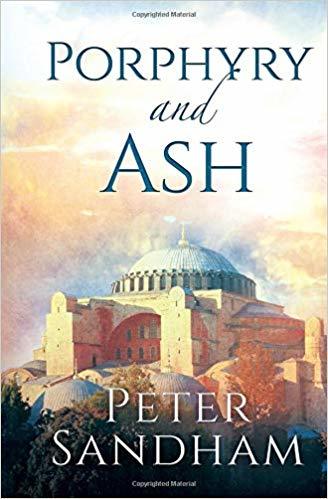
1452After a thousand years, the sun is setting on the Eastern Roman Empire. The covetous eyes of the Ottoman Sultan have fixed themselves upon Constantinople. His great army prepares to strike. Meanwhile the Byzantine imperial court is split between those who would sacrifice everything – including their church – to defend the city, and others who would prefer rule by the Turkish turban.But amid the deadly undercurrent of court politics, religious division and a brutal siege, Anna Notaras, youngest daughter of Byzantium’s richest family, has a more mundane issue to solve: how to rid herself of an unwanted marriage betrothal to a loathsome Venetian.When she meets John Grant among the mercenaries flocking to the city’s defence, she thinks she might have found a solution. Scottish, world-weary and repentant, Grant hopes holy war can bring absolution for his dark past. He soon discovers that life in Constantinople is never so simple, and the cannons and scimitars of the invaders beyond the crumbling walls might prove less lethal than the dangers lurking within them: a flamboyant Genoese general with a hidden agenda, a firebrand monk with the mob in his thrall, a murderer with a taste for the theatrical. And although Grant has the requisite strength and skills to overcome all of these, in the beautiful, astute, monstrously ambitious Anna, he might have met his match.
Pick up your copy ofPorphyry and AshAmazon UK • Amazon US
Peter Sandham
 Peter Sandham was born in the west of England and spent his childhood re-fighting the Trojan war in his back garden. He attended the University of California at Berkeley and Bristol University and emerged with a joint honours in Politics and Philosophy and an unhealthy admiration for Machiavelli. He currently lives in Hong Kong with his wife and three children. Porphyry and Ash is his first novel.Connect with Peter: Blog • Facebook • Twitter.
Peter Sandham was born in the west of England and spent his childhood re-fighting the Trojan war in his back garden. He attended the University of California at Berkeley and Bristol University and emerged with a joint honours in Politics and Philosophy and an unhealthy admiration for Machiavelli. He currently lives in Hong Kong with his wife and three children. Porphyry and Ash is his first novel.Connect with Peter: Blog • Facebook • Twitter.
Published on July 23, 2019 21:00
July 22, 2019
#HistoricalFiction author, D.R. Bell, is sharing an excerpt from his fabulous book — Eleos #WW2 #Giveaway @hfvbt
Historical Fiction Virtual Blog Tours Presents…
EleosBy D.R. Bell
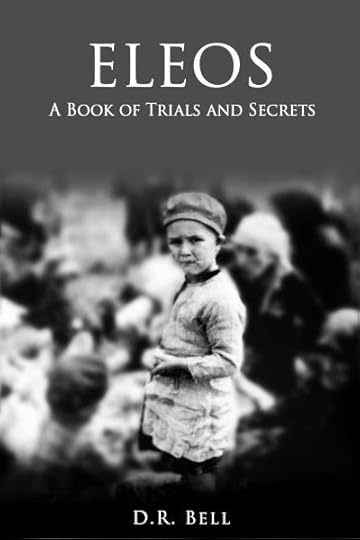
The discovery of a valise of old letters written to his Armenian grandfather from an Auschwitz survivor starts Avi Arutiyan on an odyssey to uncover the mystery surrounding his grandfather’s unsolved death. From the killing fields of Anatolia to the trial of Adolf Eichmann, Avi’s quest opens a door into intersecting paths and dark secrets of three families, stretching back to 1915.How do these things happen time and again: the Holocaust was preceded by the Armenian Genocide, and followed by the killing fields of Cambodia, Rwanda, and Bosnia. Who were the people behind them? Eleos is a story of saviors and murderers, of bystanders and of those that don’t fall into an easy-to-classify category. Hopefully the book can serve as a reminder to protect our own humanity, because ultimately the battlefield is inside all of us.Praise for Eleos“Bell masterfully combines his mystery story with an unflinching look at the 20th century’s bleakest tragedies. A beautiful . . . challengingly complex tale of the ramifications of history.” Kirkus Reviews
Excerpt
In the glass cage, the little man listened, unmoved. He didn’t consider himself guilty. Not in the sense of indictment. You see a man alone, isolated and despised, and you want to pity that man. But not him. I couldn’t understand him human-to-human; he was somehow from a different place. He had all the physical characteristics of a human being and yet he was different. What did the extermination even mean to him? He didn’t remember where, when and how many he sent to their deaths. But he remembered nice dinners he had. From the Wannsee conference that planned a mass murder, he remembered having cognac by the fireplace. Here was Adolf Eichmann, in the dock, very ordinary, very harmless. But when he had the power… If they won the war, what would he have looked like?
That night I had another dream of dancing children. They wore school uniforms, the girls in white blouses and dark-blue skirts, the boys in white short-sleeves and black pants. Shirts and blouses were emblazed with a school logo of a tree being consumed by a fire. I couldn’t see their faces in the darkness. The children took each other’s hands and formed a large circle. All, but one boy that held a torch. The boy threw the torch into the middle and a great pyre lit up, hissing and crackling. I was outside of their circle and even there I felt the immense heat and took a step back. But the children didn’t mind. The boy that had the torch joined the circle, and they began to dance: two steps counterclockwise, kicked off their left leg, then their right one, two more steps. They danced silently, with the roar of the pyre being the only terrible music. Their faces were lit up by the orange flames, but I still couldn’t see their features. They went faster and faster. Soon they were dancing on their toes. And then they defied gravity and rose off the cold ground, first by a foot, then a yard, then the circle became a beautiful rotating blur that went up higher and higher, above the pyre, above the embers, into the dark sky.
I woke up in a cold sweat and remembered that we had school children visit the museum two days prior, and last night I walked by a building where they burned some old leaves.
Ten weeks into the trial, Eichmann finally took the stand. He looked different, grayish, afraid at last. In a low voice he told us the story of his misfortune. He was no anti-Semite. He was nobody important; he just happened to have taken up Jews as his specialty. He worked to help the Jews. He had always sought peaceful solutions, but like Pontius Pilate he had no choice. He never acted on his own initiative. Documents had been altered. Colleagues lied. He did not remember this, and he did not remember that. 115 skeletons for research? He did not remember. His name in the letter? OK, but he was not authorized. In Hungary, he was “marginally involved.” He was simply an “observer.” He was “unlucky.” He was the victim. The Washington Postfound “dignity” in Eichmann.
For two months in that courtroom, he was a puzzle, an enigma to me. I couldn’t grasp the essence of his humanity. Until he opened his mouth and said that one sentence:
“The question of conscience is a matter for the head of the state.”
And that’s when I finally saw inside of him. Human beings have a conscience. Sometimes we blocked it in order to survive a bit longer, but it was always there. He didn’t have one, he gave his up voluntarily and permanently. He was a clever, malevolent non-human that feasted on power.
Giveaway
During the Blog Tour, we are giving away one eBook and one paperback copy of ELEOS! You can enter HERE!
Giveaway Rules
• Giveaway ends at 11:59 pm EST on July 15th. You must be 18 or older to enter.• Giveaway is open internationally.• Only one entry per household.• All giveaway entrants agree to be honest and not cheat the systems; any suspicion of fraud is decided upon by blog/site owner and the sponsor, and entrants may be disqualified at our discretion.• The winner has 48 hours to claim prize or a new winner is chosen.
Pick up your copy ofEleosAmazon UK • Amazon US
D.R. Bell
 I didn’t plan to become a writer. A few years ago, a friend’s death prompted me to ask what would be the one thing I regret not doing. I’ve always been an avid reader but have not had the courage to write. And I made a New Year resolution to write a book. That’s how The Great Game came about. I try to write about serious topics but wrap them into an action-filled story. While all my books are entirely fictional, each of them carries a Commentary how the fiction is rooted in facts and realities of current events.The first three books – The Metronome, The Great Game, and The Outer Circle – form a trilogy, where the lives the seemingly unconnected characters intersect against the backdrop of a turbulent power game between United States, China, and Russia. Unfortunately, some of the events described there are now happening in real life.Marshland is a detective story set in modern Los Angeles, focused on the impact that internet and social media can have on our lives and their potential for unscrupulous abuse by those in power.The latest project, Eleos, is a historic fiction set primarily during the time of the Eichmann’s trial. In a way, it’s a personal investigation into how events like the Holocaust and the Armenian Genocide become possible.Connect with D.R. Bell:WEBSITE • FACEBOOK • GOODREADS
I didn’t plan to become a writer. A few years ago, a friend’s death prompted me to ask what would be the one thing I regret not doing. I’ve always been an avid reader but have not had the courage to write. And I made a New Year resolution to write a book. That’s how The Great Game came about. I try to write about serious topics but wrap them into an action-filled story. While all my books are entirely fictional, each of them carries a Commentary how the fiction is rooted in facts and realities of current events.The first three books – The Metronome, The Great Game, and The Outer Circle – form a trilogy, where the lives the seemingly unconnected characters intersect against the backdrop of a turbulent power game between United States, China, and Russia. Unfortunately, some of the events described there are now happening in real life.Marshland is a detective story set in modern Los Angeles, focused on the impact that internet and social media can have on our lives and their potential for unscrupulous abuse by those in power.The latest project, Eleos, is a historic fiction set primarily during the time of the Eichmann’s trial. In a way, it’s a personal investigation into how events like the Holocaust and the Armenian Genocide become possible.Connect with D.R. Bell:WEBSITE • FACEBOOK • GOODREADS
Published on July 22, 2019 21:30
July 21, 2019
Join #HistoricalFiction author, Shaun Green, as he shares his inspiration behind his book — Dawn of Dark Days #amwriting @ShaunGreenSnr
Dawn of Dark DaysAn Author’s InspirationBy Shaun Green

The inspiration to write my debut novel, Dawn of Dark Days, was borne from my desire to explore a forgotten but vital part of British history. I have always been interested in history, both fiction and non-fiction, easily being lost in my own imagination of what it would be like to live amongst some of those legendary figures. I recently came across a little known fact about how and why the Saxons first came to Ebbsfleet, their first settlement. They had been invited by a Briton King as mercenaries. This led to my usual article research and I discovered a fable in British history I had not come across, and the importance of one man stood out. If I was to say this article refers to a formidable warrior king of the fifth century, Arthur would spring into most readers minds. Some argue his existence, others suggest several influential figures have been conflated into one mythical legend.
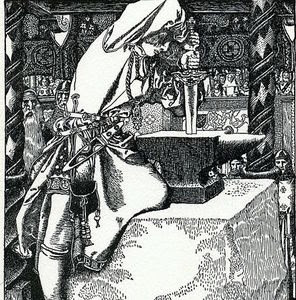 The many legends of mythical King Arthur are widely known.
The many legends of mythical King Arthur are widely known.However, there is considerable evidence that a legendary warlord that could have been an equal to the popularised mythical man did exist during this period, but he was not a Roman Briton. King Drest I of the Picts was possibly the first man to hold this title, and certainly the first noteworthy King of Pictland. This region is also recorded as Pictavia in some documented sources. He was a man revered above all peers, a leader with no equal. A Chieftain who not only united all the clans of his people, but had ambitions of dominating all of Britannia. The Pictish chronicles, a historic record of Scottish kings' dated somewhere in the ninth century, states that he 'reigned for one hundred years and triumphed in one hundred battles.'
 A surviving copy of the ninth century Pictish Chronicle.
A surviving copy of the ninth century Pictish Chronicle.John of Fordun, a fourteenth century priest, records Drest as having reigned for forty five years. This is a much more believable period of time than the earlier suggestion. Yet this is still a lengthy rule during such a time of unrest after the Romans sudden and complete withdrawal. Sovereignty may not have passed from father to son, with some sources stating the most formidable warrior could take command. With this in mind, any man skilled in swordplay could have challenged Drest during his rule, which probably would have occurred as he conquered more territories, stretching his loyalties.
 An image of the legendary barbarian-esque Pict Warriors.
An image of the legendary barbarian-esque Pict Warriors.He took control over a vast part of Northern Britain, from the Scottish North West coast, to disputably, as far south as Lindum. (A Roman settlement of great authority during this period, now known as Lincoln.)
 A map showing the extent of this fabled conquest.'
A map showing the extent of this fabled conquest.'Various sources state that it was this conquest into Briton that forced King Vortigern, possible High King of Briton, to hire two exiled Saxon chieftains to help fight against the Picts. These Brothers, Hengest and Horsa, helped push the Picts back into Pictland. The Angles never went back across the channel, thus starting the conquest which would, in four hundred years time, create England. His existence is supported by Christian records, which place him around the time of Saint Ninian, Palladius, and Saint Patrick. The Pictish chronicles state that Saint Patrick left Scotland for Ireland in the nineteenth year of Drests reign, which places him somewhere in the middle of the fifth century. However, the Picts left no personal written records, although a few stone carvings have been attributed to them.
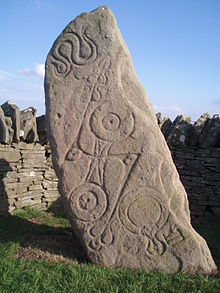 Example of Pictish stone carvings.
Example of Pictish stone carvings.The lack of specific detail makes it difficult to confidently, or accurately, suggest Drest's period of reign, or his achievements. The few records we have are written centuries later, mainly by Christian Chroniclers as a way to record and synchronise the success of missionary work. The boast of reigning for one hundred years is unlikely, but any lengthy rule could have meant he outlived most of his original followers, many of which would have fallen in battle. Thus no one who lived after his death could remember just how long he had ruled. One hundred triumphs also sounds like an exaggerated boast. However, if he was the chieftain that united the various Pictish clans before turning his attention to other kingdoms, it becomes less of a stretch of the imagination. On thing the majority of conflicting sources agree on is his numerous victories over Scots, Britons and Angles and that he is a legendary and noteworthy King.Despite all of the above, I struggled to find much about this man, except for confirmation of his existence, and one other twisted tale which only increased my interest. This other factor coincided with the Saxon mercenaries challenging the Picts, which resulted in the invasion being quashed. I then turned my attention, as usual, to discovering other people's interpretations of these events through fiction. I searched for novels about Drest's deeds but found little success. Having been so enthralled about discovering this forgotten tale, and the fact such a legendary king has not already been popularised in text, I set about writing my first 'Work in Progress.' I have now published my first book in a planned series loosely based around this time period. Drest I, although fascinating, is not the only noteworthy man who features. Also, the other factor that was another great source of intrigue features heavily in the story line, although at a stage i have not written about yet. I feel to even hint on the subject would be too much of a spoiler, although it is easily discoverable if researched. One certain way to find out is to delve into the world of the Picts I have created in my books...
Dawn of Dark Days

The Roman army and administrative elite abandoned Briton, leaving behind a defenceless land. The proclaimed High King salvaged an uneasy alliance throughout Briton and Wales but his untimely death after a Scot raid has left Briton in disarray once again. The Scot Kings formed an uneasy alliance and brokered a treaty to end their civil war. Now is the time to work as one people and conquer the age-old enemy, Briton.
Calum, the second son of a Scot Ealdorman, is thrust into a world of violence, diplomacy and treachery. He is betrayed, used and hunted as he struggles to prove his worth to a distrusting kings’ council, his family, his men and himself. Some see him as a spy, others a coward, but few see his potential to be the uniting leader the hostile allies need. He alone has the power to bring upon Briton what they deserve. He can ignite the dawn of dark days…
Pick up you copy ofDawn of Dark DaysAmazon UK • Amazon USRead for Free on

Shaun Green
 Shaun was born in Peterborough. He studied at the University of Wolverhampton, gaining a BA (Hons) degree in criminal justice. He served in the Royal Navy for eight years as a submariner and then part of the commando helicopter force. He then pursued a lifelong ambition of being a prison officer.Shaun has always loved to write and create. His imagination always took him to wondrous places with his wandering mind landing him in trouble on regular occasions, especially in childhood. Now he begins another ambition of putting his world into the realms of reality, for others to enjoy.Connect with Shaun: Twitter • Amazon Author Page.
Shaun was born in Peterborough. He studied at the University of Wolverhampton, gaining a BA (Hons) degree in criminal justice. He served in the Royal Navy for eight years as a submariner and then part of the commando helicopter force. He then pursued a lifelong ambition of being a prison officer.Shaun has always loved to write and create. His imagination always took him to wondrous places with his wandering mind landing him in trouble on regular occasions, especially in childhood. Now he begins another ambition of putting his world into the realms of reality, for others to enjoy.Connect with Shaun: Twitter • Amazon Author Page.
Published on July 21, 2019 23:00
July 19, 2019
Book Review — Like Chaff in the Wind (The Graham Saga Book #2) by Anna Belfrage #Historical Romance #TimeTravel @abelfrageauthor
 Like Chaff in the Wind(The Graham Saga Book #2)By Anna Belfrage
Like Chaff in the Wind(The Graham Saga Book #2)By Anna Belfrage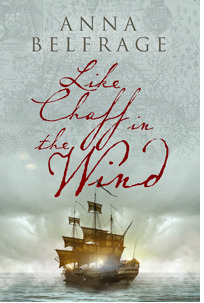
Matthew Graham committed the mistake of his life when he cut off his brother's nose. In revenge, Luke Graham has Matthew abducted and transported to the colony of Virginia to be sold as indentured labour. Matthew arrives in Virginia in May 1661 and any hope he had of finding someone willing to listen to his story of unlawful abduction is quickly extinguished. If anything, Matthew's insistence that he is an innocent man leads him to being singled out for the heaviest tasks. Insufficient food, gruelling days and the humid heat combine to wear him down. With a sinking feeling, he realises no one has ever survived their seven years of service on the plantation Suffolk Rose. Fortunately for Matthew, he has a remarkable wife. Alex Graham has no intention of letting her husband suffer and die. So she sets off from Scotland on a perilous journey to bring her husband home. Alex is plagued by nightmares in which Matthew is reduced to a wheezing wreck by his tormentors. Sailing to Virginia, she prays for a miracle to carry her swiftly to his side. But fate has other plans, and what should have been a two month crossing turns into a year long adventure - from one side of the Atlantic to the other. Will Alex find Matthew in time? Will she be able to pay the price of setting him free? Like Chaff in the Wind continues on from The Rip in the Veil, taking Alex and Matthew's love story to a new continent.

“This was the work of his hell-spawn of a brother and now, oh dearest Lord, now there was no one there to protect his wife and son...”
Matthew Graham took his brother’s nose. He should have taken his life. Luke will not stop until Matthew is dead, and all that belongs to Matthew is his. Once again, Matthew finds himself in chains because of his brother, only this time it was going to be worse for his destination was Virginia. His brother had known, by God, he had known, that no one survived seven years of indentured servitude at the Suffolk Rose Plantation, but what Luke had not countered on was that Matthew had a reason to live. Matthew would be damned if he died in a foreign country away from all of those he loved.
But even the most courageous of hearts can be broken — just as a body can be broken. With a crushed spirit, Matthew’s only hope is that his hot-headed wife will try to rescue him. Unfortunately, Alexandra is back in Scotland and has no idea what has happened to him.
Alexandra (Alex) Graham had not travelled through time and sacrificed everything familiar, including her son, to become a widow. She will find her beloved Matthew. All he has to do is stay alive.
From a dreary icy January in Edinburgh to the relentless heat of a Virginia summer, Like Chaff in the Wind (The Graham Saga Book #2) by Anna Belfrage is the compelling adventure of one woman’s fight to free her man and bring him home.
Like Chaff in the Wind had me gripped from the opening sentence to the very last full stop. Belfrage writes not only with tremendous verse but also with a keen eye for what is entertaining. There was not a dull moment in this book. The action kept on coming, and this kept those pages turning long into the night.
Belfrage deserves the highest of praise for her mesmerising narrative and her authentic historical detailing. Belfrage tackles the somewhat controversial issue of what it was like to be an indentured servant in the 17th century. Often overshadowed by the horrors of the African Slave Trade, an indentured servant was often involuntarily forced to provide free labour for a fixed amount of time. However, for most indentured servants, it was a life sentence. If they survive the crossing, they then had to acclimatise to a very foreign climate. They also had to contend with tropical diseases, and on top of all of this, they had to perform back-breaking work on very little nourishment. The colour of their skin did not make them exempt from cruel floggings. Belfrage has painted a harrowing picture of what life was like for an indentured servant in the 17thcentury. The authenticity of Matthew’s plight was so real it was almost tangible. Belfrage has obviously spent long hours researching the conditions that the indentured servants were forced to live in as well as what was expected of them. The plantation owners thought nothing of working them to death. Belfrage demonstrated this total lack of humanity through Matthew’s situation. As a reader, I wept for him.
Alexandra is in a time that is so very different from the era she was born in. The 17thcentury is a difficult place to navigate for a very modern woman. Nevertheless, Alex does whatever it takes to find her man and bring him home. Belfrage has given us a very strong and incredibly brave heroine in Alex. Alex’s tenacity and her sharp wit made this story totally irresistible and next to impossible to put down. There were times when Alex’s recklessness and total disregard for the time she was in made for some cliff-hanging, fingernail biting tension, but this all added to the appeal of this book.
Belfrage balances the two very different time frames — the 17th century and 21st century — with a great deal of skill and diligence. By showing what Alex’s family was experiencing in the 21st century gave this story not only depth but brilliance. Alex has left a seven-year-old son behind, and it was his story that really pulled at my heartstrings.
Like Chaff in the Wind is a real treat for lovers of time-travel fiction. I cannot wait to get my hands on book #3 of this fabulously enthralling series.
I Highly Recommend.
Review by Mary Anne Yarde.The Coffee Pot Book Club.
Pick up your copy ofLike Chaff in the Wind Amazon UK • AmazonUS
Anna Belfrage
 Had Anna been allowed to choose, she’d have become a time-traveller. As this was impossible, she became a financial professional with two absorbing interests: history and writing. Anna has authored the acclaimed time travelling series The Graham Saga, set in 17th century Scotland and Maryland, as well as the equally acclaimed medieval series The King’s Greatest Enemy which is set in 14th century England. She has recently released the first in a new series, The Wanderer. This time, she steps out of her normal historical context and A Torch in His Heart is with a fast-paced contemporary romantic suspense with paranormal and time-slip ingredients.
Had Anna been allowed to choose, she’d have become a time-traveller. As this was impossible, she became a financial professional with two absorbing interests: history and writing. Anna has authored the acclaimed time travelling series The Graham Saga, set in 17th century Scotland and Maryland, as well as the equally acclaimed medieval series The King’s Greatest Enemy which is set in 14th century England. She has recently released the first in a new series, The Wanderer. This time, she steps out of her normal historical context and A Torch in His Heart is with a fast-paced contemporary romantic suspense with paranormal and time-slip ingredients.Find out more about Anna by visiting her website, or herAmazon page.
Published on July 19, 2019 20:00
The Coffee Pot Book Club
The Coffee Pot Book Club (formally Myths, Legends, Books, and Coffee Pots) was founded in 2015. Our goal was to create a platform that would help Historical Fiction, Historical Romance and Historical
The Coffee Pot Book Club (formally Myths, Legends, Books, and Coffee Pots) was founded in 2015. Our goal was to create a platform that would help Historical Fiction, Historical Romance and Historical Fantasy authors promote their books and find that sometimes elusive audience. The Coffee Pot Book Club soon became the place for readers to meet new authors (both traditionally published and independently) and discover their fabulous books.
...more
...more
- Mary Anne Yarde's profile
- 159 followers



